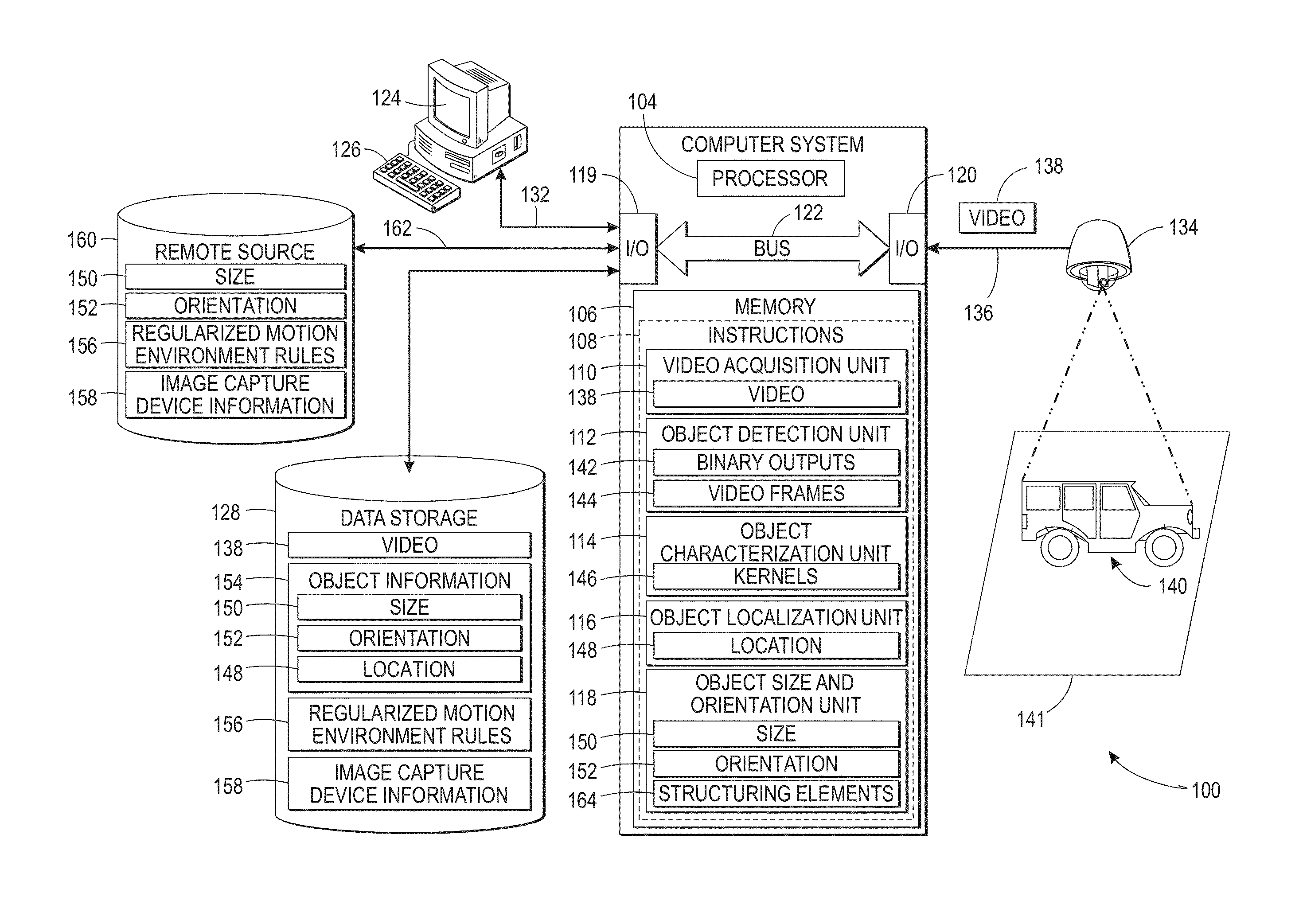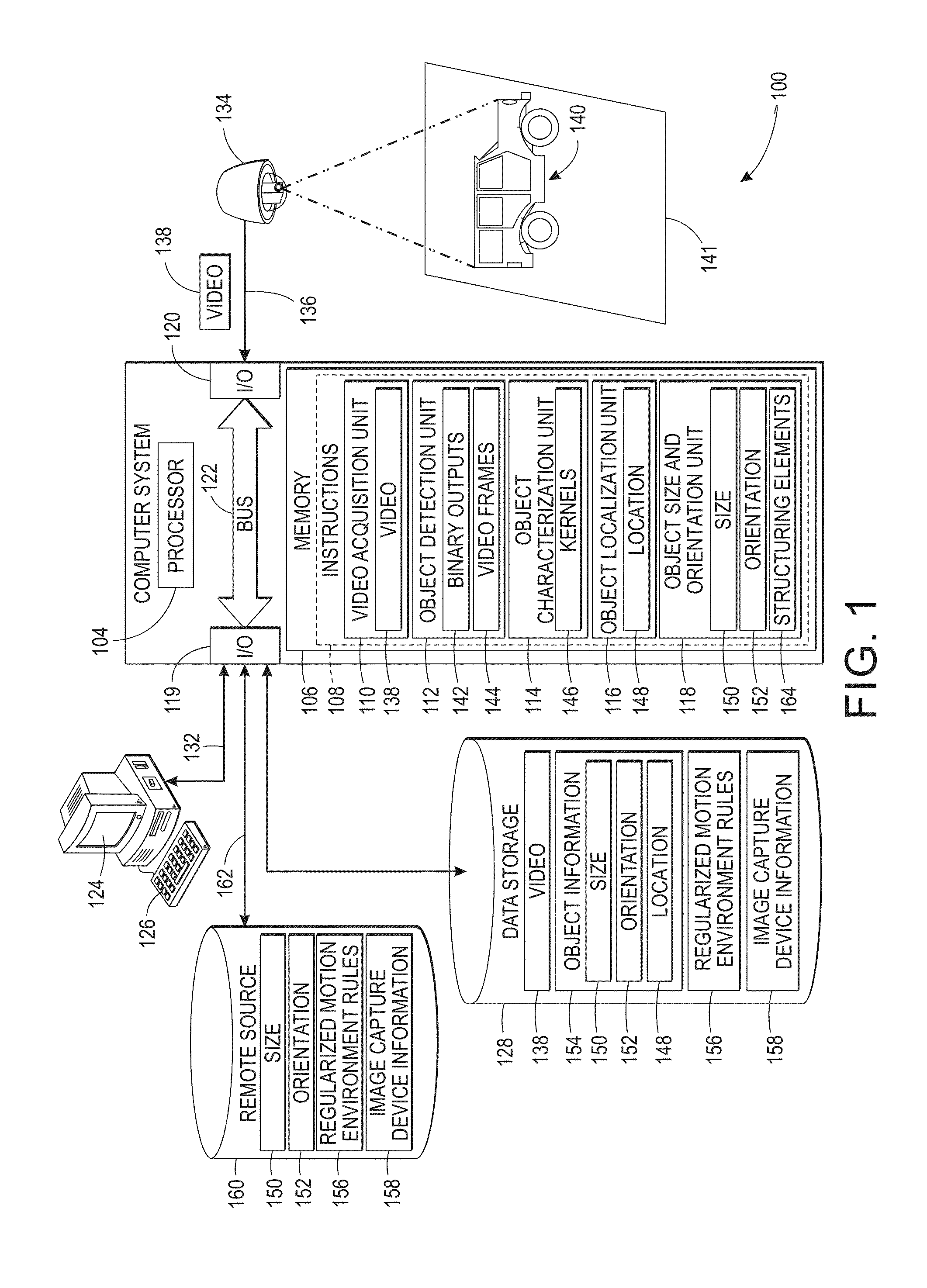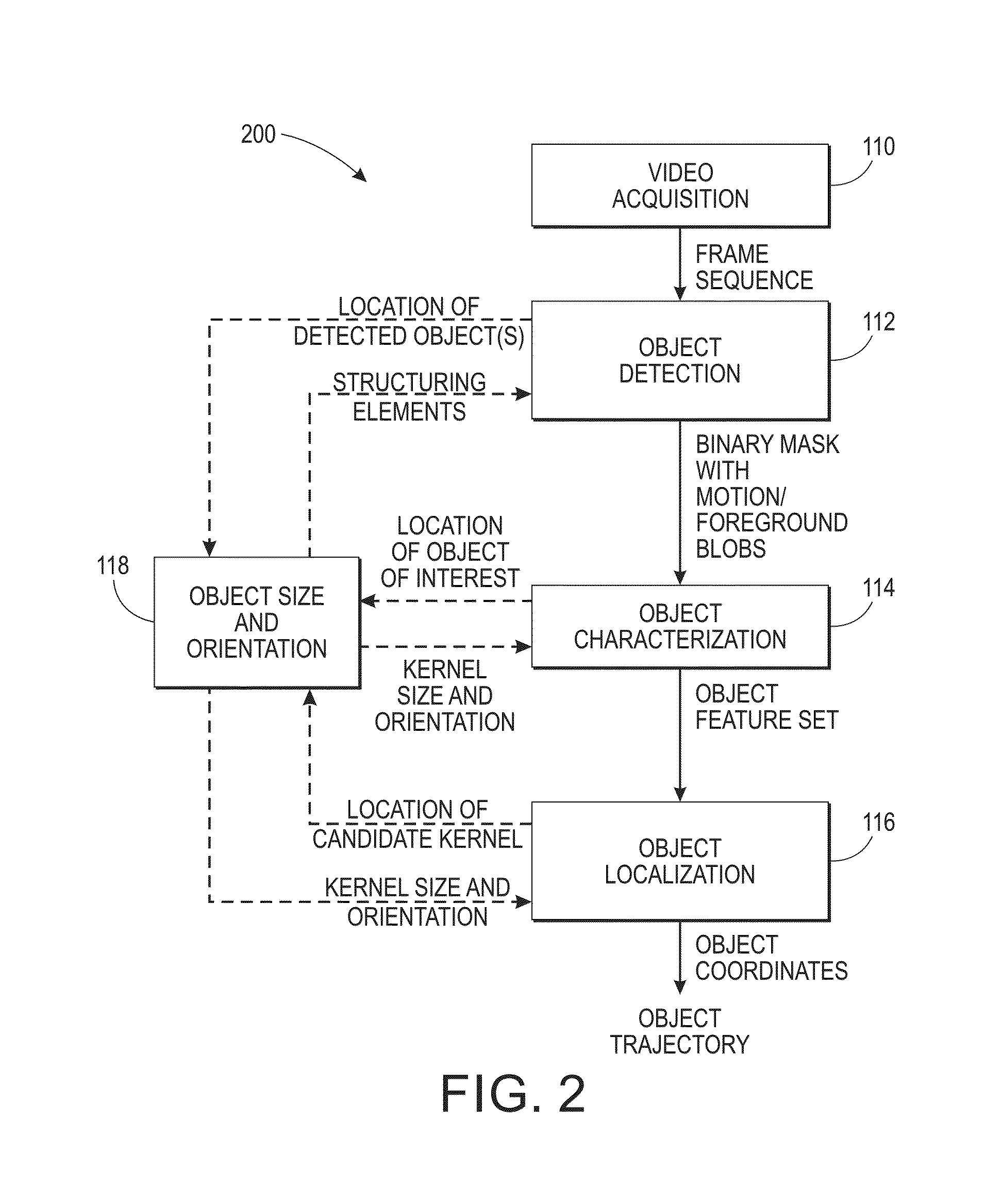System and method for using apparent size and orientation of an object to improve video-based tracking in regularized environments
a technology of object apparent size and orientation, applied in the field of transportation arts, tracking arts, video processing arts, predictive arts, can solve the problems of changing the appearance of objects, the apparent size of objects, and the limited scope of traffic and surveillance situations
- Summary
- Abstract
- Description
- Claims
- Application Information
AI Technical Summary
Benefits of technology
Problems solved by technology
Method used
Image
Examples
Embodiment Construction
[0034]One or more embodiments will now be described with reference to the attached drawings, wherein like reference numerals are used to refer to like elements throughout. Aspects of exemplary embodiments related to systems and methods for video-based tracking of objects of interest are described herein. In addition, example embodiments are presented hereinafter referring to tracking an object of interest in a regularized motion environment, such as tracking vehicles in a parking lot, on a highway, on a road, etc., or people in a building, in a park, on a sidewalk, etc., from acquired video, however application of the systems and methods set forth herein can be made to other areas of tracking or imaging operations.
[0035]According to one embodiment, there are provided systems and methods which extend object tracking via exploitation of a priori and / or learned knowledge of object size and orientation in a regularized motion environment in order to achieve robust and computationally ef...
PUM
 Login to View More
Login to View More Abstract
Description
Claims
Application Information
 Login to View More
Login to View More - R&D
- Intellectual Property
- Life Sciences
- Materials
- Tech Scout
- Unparalleled Data Quality
- Higher Quality Content
- 60% Fewer Hallucinations
Browse by: Latest US Patents, China's latest patents, Technical Efficacy Thesaurus, Application Domain, Technology Topic, Popular Technical Reports.
© 2025 PatSnap. All rights reserved.Legal|Privacy policy|Modern Slavery Act Transparency Statement|Sitemap|About US| Contact US: help@patsnap.com



